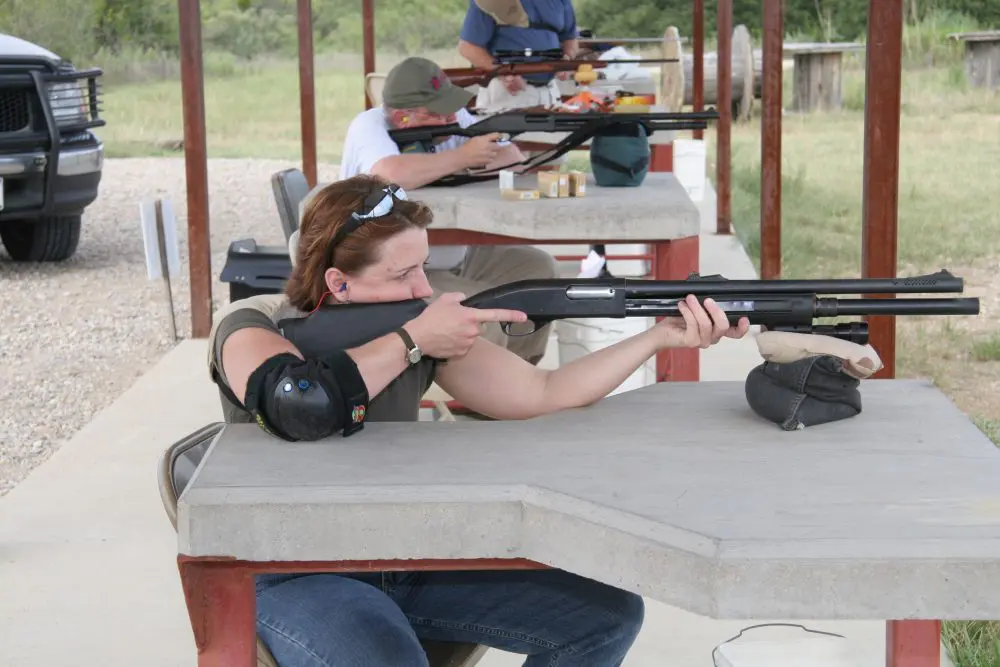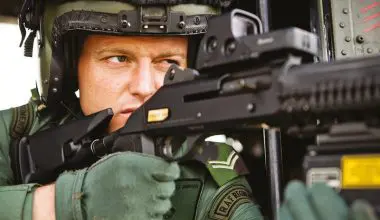THE flechette, a small dart-like projectile, has been of interest to military weapons designers for decades because of its ballistic performance and penetration.

Flechettes have been used in everything from 12-gauge shotgun shells to artillery rounds to rockets carried by helicopter gunships. As an example, the U.S. 105mm XM580E1 “Beehive” rounds—so called because of the buzzing sound they made as they traveled toward their targets—contained 9,000 eight-grain flechettes! For gunship use, the Hydra 70 70mm rocket may use an anti-personnel warhead that contains 96 flechettes.
Many readers are probably familiar with the 12-gauge flechette loads used by the USMC and U.S. Navy SEALs in Vietnam. They found that the flechettes were more stable and had better penetration at longer ranges.
Other projects involving the use of flechette rounds have included the SPIW (Special Purpose Individual Weapon) that lasted for years and attempted to develop a U.S. military rifle firing multiple projectiles. Another weapon designed for use with flechette rounds was the CAWS (Close Assault Weapon System), an assault shotgun that fired flechettes in the SCIMTR load.
Reportedly, Picatinny Arsenal was heavily involved in development of the various flechette rounds. Whirlpool, of appliance fame, was also involved in developing and producing various types of flechette rounds.
As far as I can tell, research was devoted more to the use of flechette rounds in artillery and rockets rather than in shotgun shells, though 12-gauge rounds certainly saw some use.
Since I’ve collected military shotguns and ammunition for many years, I picked up quite a few Vietnam-era flechette rounds at gun shows and ammunition collector’s shows over the years. Today they are collector’s items, but in the day they were common enough that I fired a few of them and found pretty much what those who used them in Vietnam had.

At longer ranges, even out past 100 yards, they patterned far better than buckshot. When firing in heavy brush or vegetation, the flechettes were likely to get deflected. Penetration at close range was normally not as good as with 00 buckshot.
I became interested in flechette loads for shotguns again when I was told there has been some military interest in the flechette sabot shotgun load from Sabot Designs LLC. I decided to test them.
The cartridge uses a patented M1A8 sabot, which places all the flechettes pointing forward. This is noteworthy because many flechette shotgun rounds in the past placed some of the flechettes with the point rearward to stagger them for better fit in the shell. Though theoretically they would turn and stabilize in flight, this was not always the case.
Other advantages of the flechette sabot load are that the sabot maintains a concentric coaxial cluster that eliminates deformation of the flechettes as they travel down the bore and also protects the shotgun’s bore from scoring. By protecting the flechettes from the effects of gases as they leave the barrel, the sabot also reduces dispersion of the flechettes as they travel to the target.


Sabot Designs also uses a new patented flechette, emphasis on “new,” since some flechette shotgun shells have been loaded using surplus flechettes from artillery or other munitions. The newly made flechettes are hardened, with sharper concentric points, stronger shafts, and thicker fins. All these factors contribute to more consistent performance. Each shell contains 19 flechettes.
Because of the sabot, the flechettes in a Sabot Designs round perform like a slug until the sabot has left the barrel and the flechettes are released. It is recommended that ghost ring or optical sights be zeroed at 20 meters with oneounce slugs for best performance with the flechette sabot load.

Cylinder bore pump-action shotguns are recommended, though Sabot Designs is working on a load for selfloading shotguns.
For testing the Sabot Designs ammunition, I used a Remington 870 Police model with cylinder bore. I wanted to test pattern, penetration, accuracy and effect of intervening brush on the ability of the flechettes to hit a target.
First, I set up a 1/8-inch piece of fiberboard at 15 yards and fired one round. The spread covered the board well, with all flechettes impacting the board. All also penetrated, though some punched through like tiny arrows, while others tumbled and penetrated sideways. All would have been “unpleasant” on flesh.
I tried single shots on cardboard targets set up at 25 and 35 yards and found that, as advertised, patterns held well at the longer distances.
To test penetration, I set up a piece of ¾-inch plywood. At 15 yards, some of the flechettes punched through and some lodged in the plywood. For comparison, I followed up with a round of 00 buckshot, which punched through with full-diameter holes.

For my final test, I set up a “man” target amid fairly heavy brush and fired a round. As my previous experience indicated and as I expected, the brush deflected many of the flechettes. However, six of the 19 punched through the target, some tumbling and penetrating on their sides and some punching straight through. The sabot also penetrated at the base of the neck, which would have contributed to stopping effect.
The Sabot Designs ammunition performed well. Sabots are at their best for longer-range engagement without intervening impediments. Patterns are good and retain consistency at longer ranges than most buckshot loads. Penetration seems good on soft targets based on my tests and the ballistic gel photos Sabot Designs sent me.






